-
 Bitcoin
Bitcoin $82,710.8499
-3.03% -
 Ethereum
Ethereum $1,793.0497
-6.16% -
 Tether USDt
Tether USDt $0.9997
-0.03% -
 XRP
XRP $2.0245
-5.40% -
 BNB
BNB $588.9681
-3.44% -
 Solana
Solana $119.1214
-6.27% -
 USDC
USDC $0.9999
0.00% -
 Dogecoin
Dogecoin $0.1639
-6.02% -
 Cardano
Cardano $0.6406
-5.69% -
 TRON
TRON $0.2332
-1.69% -
 Toncoin
Toncoin $3.8230
-5.85% -
 UNUS SED LEO
UNUS SED LEO $9.3854
1.36% -
 Chainlink
Chainlink $12.8724
-8.54% -
 Stellar
Stellar $0.2562
-5.91% -
 Avalanche
Avalanche $17.9839
-8.74% -
 Sui
Sui $2.2792
-5.46% -
 Shiba Inu
Shiba Inu $0.0...01202
-5.27% -
 Hedera
Hedera $0.1606
-5.78% -
 Polkadot
Polkadot $3.9509
-5.40% -
 Litecoin
Litecoin $81.5906
-3.66% -
 MANTRA
MANTRA $6.3111
0.24% -
 Bitcoin Cash
Bitcoin Cash $294.0354
-4.83% -
 Bitget Token
Bitget Token $4.4720
-3.32% -
 Dai
Dai $0.9996
-0.04% -
 Ethena USDe
Ethena USDe $0.9998
-0.02% -
 Pi
Pi $0.6540
-7.46% -
 Hyperliquid
Hyperliquid $11.9178
-10.37% -
 Monero
Monero $214.1800
-1.67% -
 Uniswap
Uniswap $5.8136
-7.44% -
 Aptos
Aptos $5.0806
-6.27%
What is "Token Burn"? What impact does it have on prices?
Token burns reduce a cryptocurrency's supply, potentially increasing value, but don't guarantee price rises; market conditions and project utility are crucial factors.
Mar 31, 2025 at 10:57 am
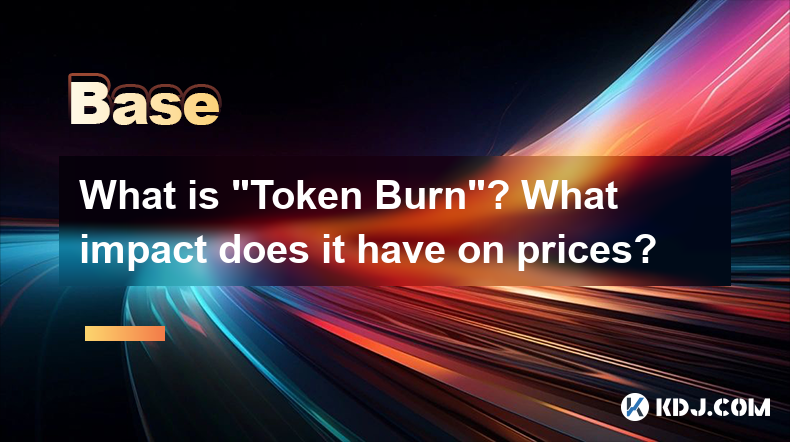
Understanding Token Burns in the Cryptocurrency World
A token burn, in the context of cryptocurrencies, is the irreversible destruction of tokens. This process reduces the circulating supply of a specific cryptocurrency. It's not a physical burning, but rather a transfer of tokens to a designated address from which they cannot be retrieved. This mechanism is often employed by projects to manage tokenomics, increase scarcity, and potentially boost the value of the remaining tokens. The process is typically publicly verifiable on the blockchain.
How Does a Token Burn Work?
The mechanics of a token burn vary depending on the cryptocurrency and its smart contract. However, the core principle remains consistent: tokens are permanently removed from circulation. This often involves a transaction where tokens are sent to a "burn address," a special address designed to permanently lock the tokens, rendering them inaccessible.
- Developer-Initiated Burns: Developers might schedule periodic burns of a predetermined number of tokens.
- Community-Driven Burns: Some projects allow the community to participate in burns, perhaps through voting mechanisms or by incentivizing token holders to contribute to the burn process.
- Automatic Burns: Certain protocols might have built-in mechanisms that automatically burn a percentage of transaction fees or other events.
The exact method is detailed in the project's whitepaper or documentation. It’s crucial to understand the specific burn mechanism of any cryptocurrency before investing.
Impact on Price: The Supply and Demand Dynamics
The primary impact of a token burn is on the supply side of the cryptocurrency's market. By reducing the total circulating supply, a burn theoretically increases scarcity. In a basic supply and demand model, decreased supply, assuming demand remains constant or increases, can lead to a higher price. However, this is not always guaranteed.
The effect on price is complex and depends on several factors:
- Market Sentiment: Positive news surrounding the burn, along with overall market conditions, can significantly influence the price reaction. A well-publicized burn can generate excitement and drive up demand.
- Demand: If demand doesn't increase alongside the reduced supply, the price might not rise significantly or could even decrease. The burn itself doesn't guarantee price appreciation.
- Project Utility: The underlying value proposition of the cryptocurrency is critical. A burn in a project with little to no utility is unlikely to result in a substantial price increase.
- Market Manipulation: Burns can sometimes be manipulated to create artificial price increases. Investors should be wary of projects that frequently announce burns without a clear strategy.
Beyond the Price: Other Impacts of Token Burns
While price impact is the most discussed consequence, token burns have other implications:
- Deflationary Pressure: Burns contribute to a deflationary model, contrasting with inflationary models where the supply constantly increases. This can be attractive to investors who value scarcity and long-term stability.
- Tokenomics and Governance: Burns are often integral to a project's overall tokenomics, affecting token distribution and potentially influencing governance mechanisms.
- Community Engagement: Public burns can foster a sense of community and transparency, demonstrating the project's commitment to its token holders.
Token Burn vs. Token Buyback
It’s important to distinguish between a token burn and a token buyback. A buyback involves a project purchasing its own tokens from the open market. While both can reduce the circulating supply, a buyback involves the project spending its funds, whereas a burn is a direct removal of tokens. Buybacks can also influence price by increasing demand, but the impact can be less predictable than a burn, as the buyback price is market-dependent.
Token Burn: A Tool, Not a Guarantee
It's crucial to understand that a token burn is not a guaranteed path to price appreciation. While it can positively influence price by reducing supply, the overall market conditions, project utility, and community sentiment are equally important factors determining the success of a token burn. Investors should conduct thorough due diligence before investing in any cryptocurrency, considering all aspects beyond just the presence of a burn mechanism.
Frequently Asked Questions
Q: Is a token burn always beneficial for investors?
A: No. While a token burn can increase scarcity and potentially boost price, it's not a guaranteed path to profit. Market conditions and project fundamentals are crucial factors. A burn in a failing project won't magically save it.
Q: How can I find out if a cryptocurrency project plans to conduct a token burn?
A: Check the project's whitepaper, website, and official announcements. Look for information about tokenomics and any planned burn mechanisms. Active participation in the project's community can also provide insights.
Q: Are all token burns transparent and verifiable?
A: Ideally, yes. A legitimate burn should be transparent and verifiable on the blockchain. However, it's essential to scrutinize the project's claims and ensure the burn process is truly irreversible and publicly auditable.
Q: What is a burn address?
A: A burn address is a special cryptocurrency address designed to permanently lock tokens. Tokens sent to a burn address are essentially destroyed and cannot be retrieved, effectively reducing the circulating supply. This address is typically publicly accessible on the blockchain.
Q: Can a token burn be reversed?
A: A properly executed token burn is irreversible. The tokens are permanently removed from circulation. However, if the burn mechanism is flawed or improperly implemented, it might be theoretically possible to reverse it, although this would be highly unusual and likely require significant vulnerabilities in the underlying blockchain or smart contract.
Q: What are the risks associated with investing in a cryptocurrency that performs token burns?
A: The risks are similar to investing in any cryptocurrency. Market volatility, regulatory uncertainty, and project failure remain significant risks. Over-reliance on the burn mechanism as the sole reason for investment is unwise. Thorough due diligence is always essential.
Disclaimer:info@kdj.com
The information provided is not trading advice. kdj.com does not assume any responsibility for any investments made based on the information provided in this article. Cryptocurrencies are highly volatile and it is highly recommended that you invest with caution after thorough research!
If you believe that the content used on this website infringes your copyright, please contact us immediately (info@kdj.com) and we will delete it promptly.
- Bitcoin (BTC) Price Prediction: Will BTC Break Out Above $86,000 to Signal the Start of a Recovery?
- 2025-04-03 07:05:12
- Recent market activity shows a split in altcoin performance.
- 2025-04-03 07:05:12
- Publicly Traded Businesses Continuously Buying Bitcoin ($BTC) to Demonstrate Its Emerging Significance
- 2025-04-03 07:00:14
- Credefi Launches Its NFT Bonds Product on the Polytrade Marketplace
- 2025-04-03 07:00:14
- What If the Next Big Crypto Boom Isn't in Bitcoin or Ethereum—but in Meme Coins?
- 2025-04-03 06:55:13
- Despite Price Drop, Shibarium Network Processes Over 1 Billion Transactions
- 2025-04-03 06:55:13
Related knowledge
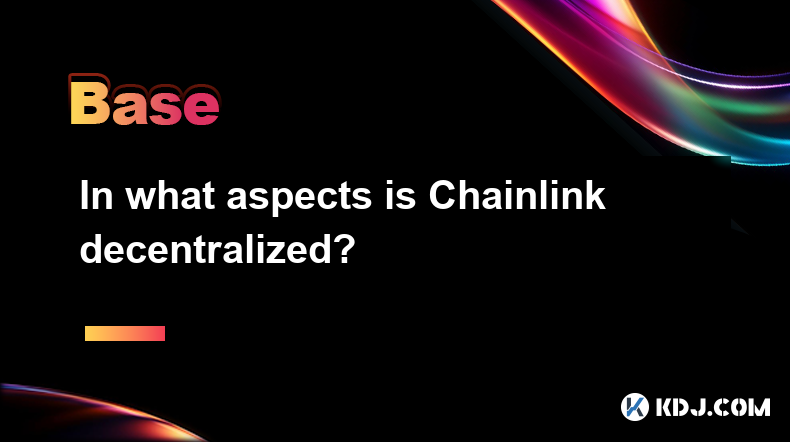
In what aspects is Chainlink decentralized?
Apr 02,2025 at 05:49pm
Chainlink is a decentralized oracle network that plays a crucial role in connecting smart contracts on blockchain networks with real-world data. Its decentralization is reflected in multiple aspects, ensuring the network's security, reliability, and integrity. This article delves into the various ways Chainlink achieves decentralization, including its n...
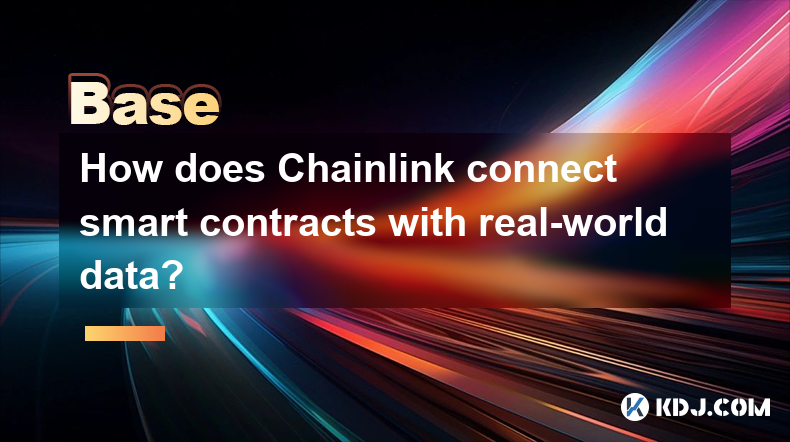
How does Chainlink connect smart contracts with real-world data?
Apr 02,2025 at 03:56pm
Chainlink is a decentralized oracle network that plays a crucial role in connecting smart contracts on blockchain platforms with real-world data. Smart contracts are self-executing contracts with the terms of the agreement directly written into code, but they can only interact with on-chain data. To access real-world data, such as stock prices, weather ...
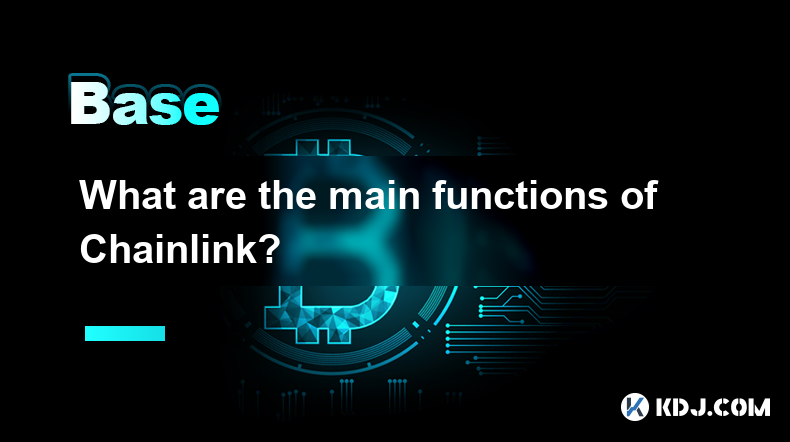
What are the main functions of Chainlink?
Apr 02,2025 at 11:49pm
Chainlink is a decentralized oracle network that plays a crucial role in connecting smart contracts with real-world data and external APIs. The primary function of Chainlink is to facilitate the seamless integration of off-chain data into on-chain smart contracts, enabling them to execute based on real-world events and information. This integration is v...

How does Chainlink work?
Apr 03,2025 at 01:50am
Chainlink is a decentralized oracle network that connects smart contracts with real-world data and external APIs. It plays a crucial role in the blockchain ecosystem by enabling smart contracts to interact with data outside their native blockchain environment. This connectivity is essential for smart contracts to execute based on real-world events and d...
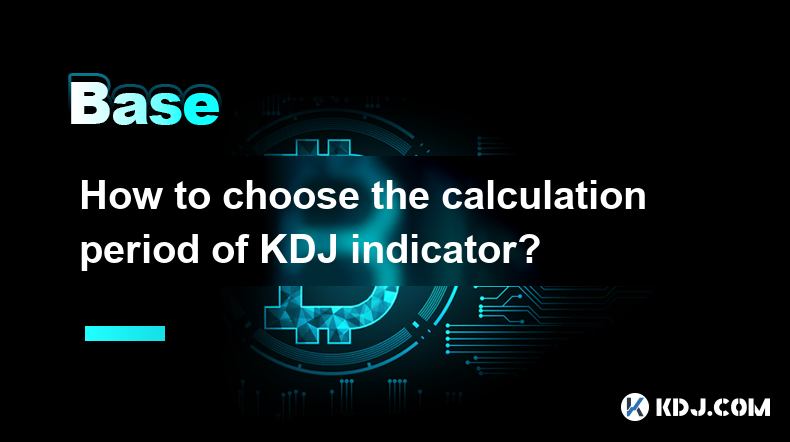
How to choose the calculation period of KDJ indicator?
Apr 02,2025 at 01:00pm
The KDJ indicator, also known as the Stochastic Oscillator, is a popular technical analysis tool used by cryptocurrency traders to identify potential buy and sell signals. The calculation period of the KDJ indicator is crucial in determining its effectiveness in predicting market trends. In this article, we will explore the factors to consider when choo...
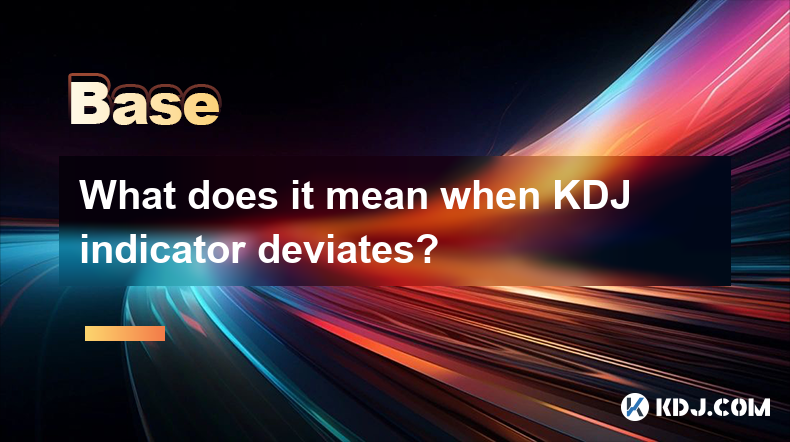
What does it mean when KDJ indicator deviates?
Apr 01,2025 at 03:08pm
The KDJ indicator, also known as the Stochastic Oscillator, is a popular technical analysis tool used in the cryptocurrency market to predict price movements. When the KDJ indicator deviates, it means that the current price of a cryptocurrency is moving away from its typical range, as indicated by the KDJ lines. This deviation can signal potential trend...

In what aspects is Chainlink decentralized?
Apr 02,2025 at 05:49pm
Chainlink is a decentralized oracle network that plays a crucial role in connecting smart contracts on blockchain networks with real-world data. Its decentralization is reflected in multiple aspects, ensuring the network's security, reliability, and integrity. This article delves into the various ways Chainlink achieves decentralization, including its n...

How does Chainlink connect smart contracts with real-world data?
Apr 02,2025 at 03:56pm
Chainlink is a decentralized oracle network that plays a crucial role in connecting smart contracts on blockchain platforms with real-world data. Smart contracts are self-executing contracts with the terms of the agreement directly written into code, but they can only interact with on-chain data. To access real-world data, such as stock prices, weather ...

What are the main functions of Chainlink?
Apr 02,2025 at 11:49pm
Chainlink is a decentralized oracle network that plays a crucial role in connecting smart contracts with real-world data and external APIs. The primary function of Chainlink is to facilitate the seamless integration of off-chain data into on-chain smart contracts, enabling them to execute based on real-world events and information. This integration is v...

How does Chainlink work?
Apr 03,2025 at 01:50am
Chainlink is a decentralized oracle network that connects smart contracts with real-world data and external APIs. It plays a crucial role in the blockchain ecosystem by enabling smart contracts to interact with data outside their native blockchain environment. This connectivity is essential for smart contracts to execute based on real-world events and d...

How to choose the calculation period of KDJ indicator?
Apr 02,2025 at 01:00pm
The KDJ indicator, also known as the Stochastic Oscillator, is a popular technical analysis tool used by cryptocurrency traders to identify potential buy and sell signals. The calculation period of the KDJ indicator is crucial in determining its effectiveness in predicting market trends. In this article, we will explore the factors to consider when choo...

What does it mean when KDJ indicator deviates?
Apr 01,2025 at 03:08pm
The KDJ indicator, also known as the Stochastic Oscillator, is a popular technical analysis tool used in the cryptocurrency market to predict price movements. When the KDJ indicator deviates, it means that the current price of a cryptocurrency is moving away from its typical range, as indicated by the KDJ lines. This deviation can signal potential trend...
See all articles
























































































